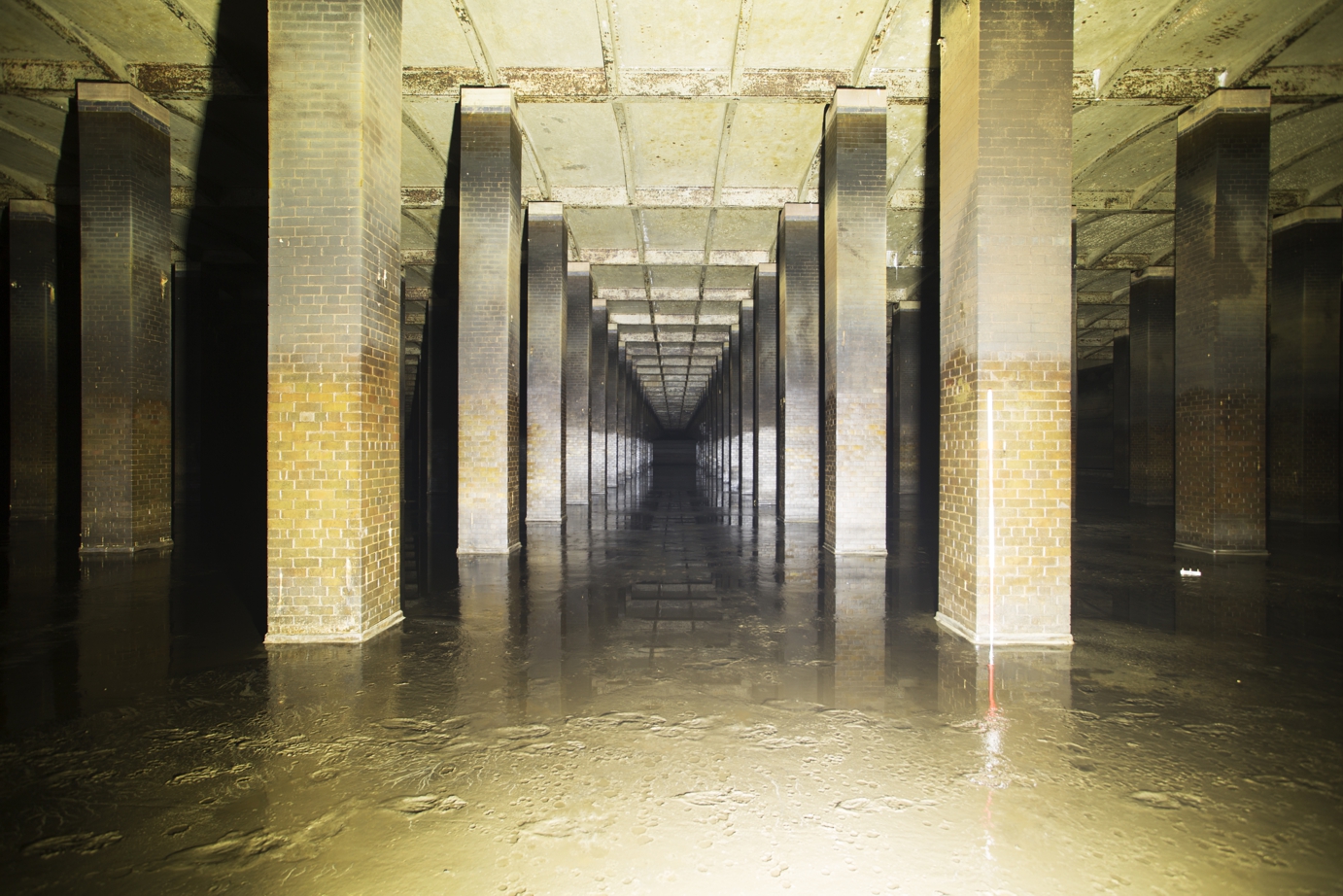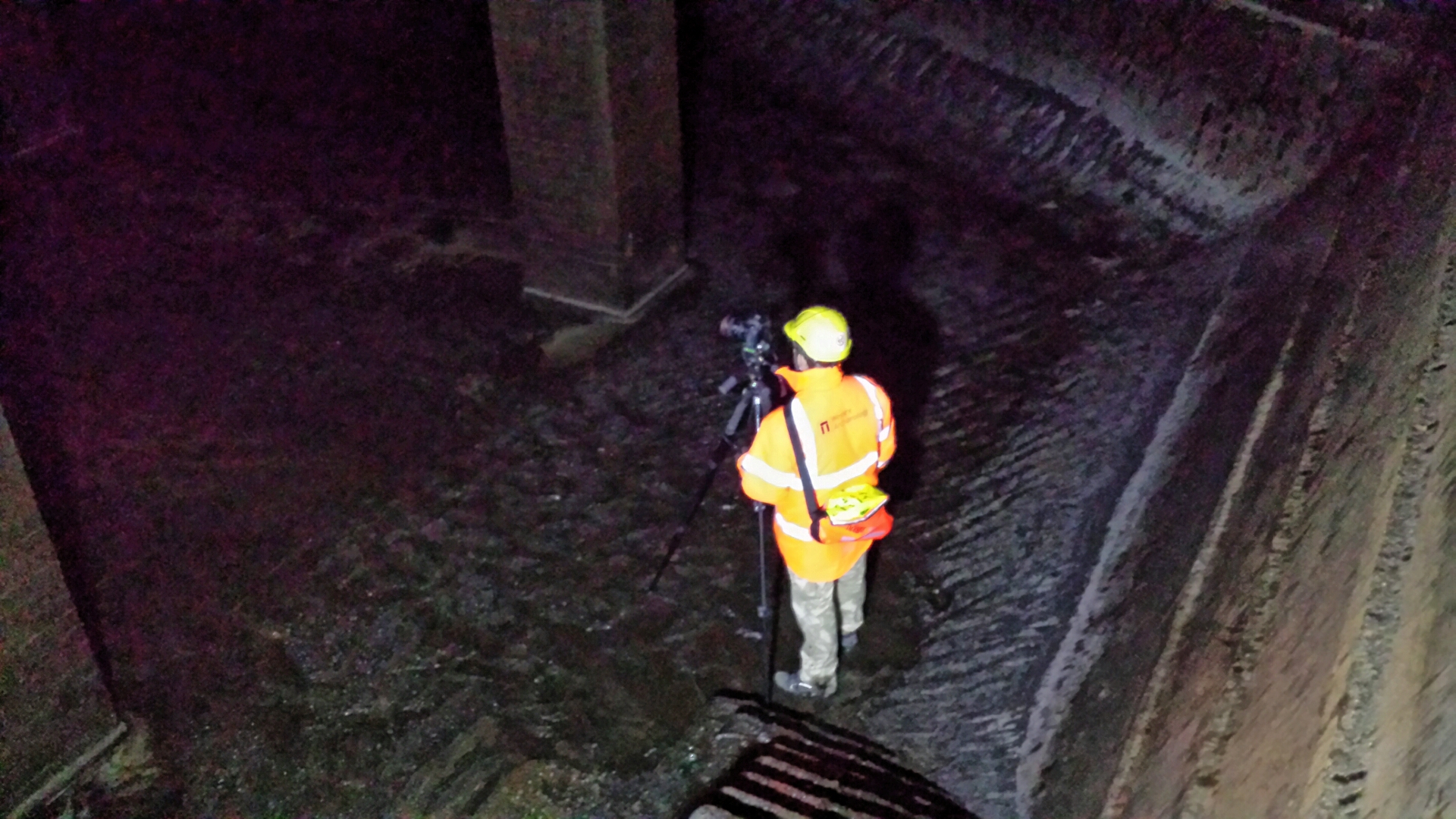
The Heritage Team from both Salisbury and Sheffield has recently carried out recording work at Ambergate Reservoir in Derbyshire. A Historic England Level 2 survey was undertaken as part of a planning condition required by the Amber Valley Borough Council, in advance of the redevelopment of the site which will include the decommissioning and replacement of the covered reservoir.
Ambergate Reservoir was constructed in 1910, to an Edwardian design, as part of a wider scheme by the Derwent Valley Water Board. The whole scheme supplied drinking water to Derby, Leicester, Nottingham and Sheffield via a series of reservoirs along the upper reaches of the River Derwent in Derbyshire. Originally three such covered reservoirs were planned but, only Ambergate was built. The reservoir had a capacity of 28 million gallons or nearly 106 million litres.
The scale was enormous, with reinforced concrete side walls 15 m thick at the base and 436 brick piers supporting a network of steel beams onto which a reinforced cast concrete cover was poured. The maximum depth of water was approximately 7 m when full. Clean water entered the 10.8 m deep octagonal inlet well via a tunnel where it was stored. Water was then pumped down several pipes to Derby, Leicester, Nottingham and Sheffield from a 10.8 m deep hexagonal gauge well. In case of over filling, the reservoir was constructed with two giant overflow pipes.

Defined as a confined space, the dark cavernous interior, measuring 190 m long and 112 m wide and 8.20 m deep, was photographed using ultra long exposures under challenging conditions and with strict health and safety guidelines. Measured plans and cross sections were also produced so that there is a full record of the reservoir.